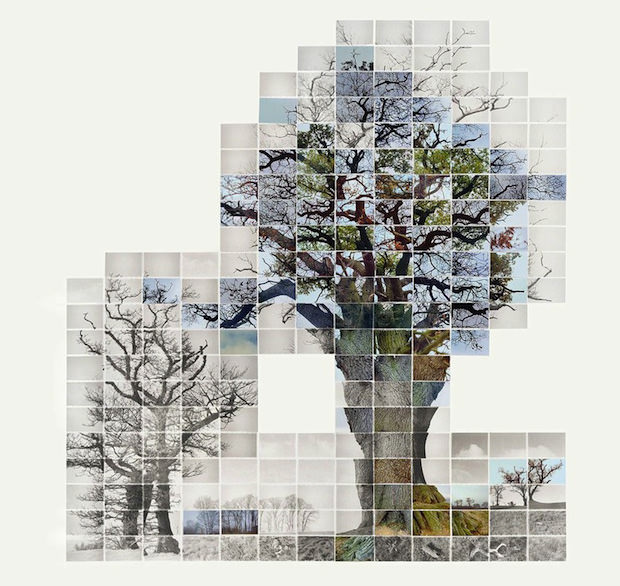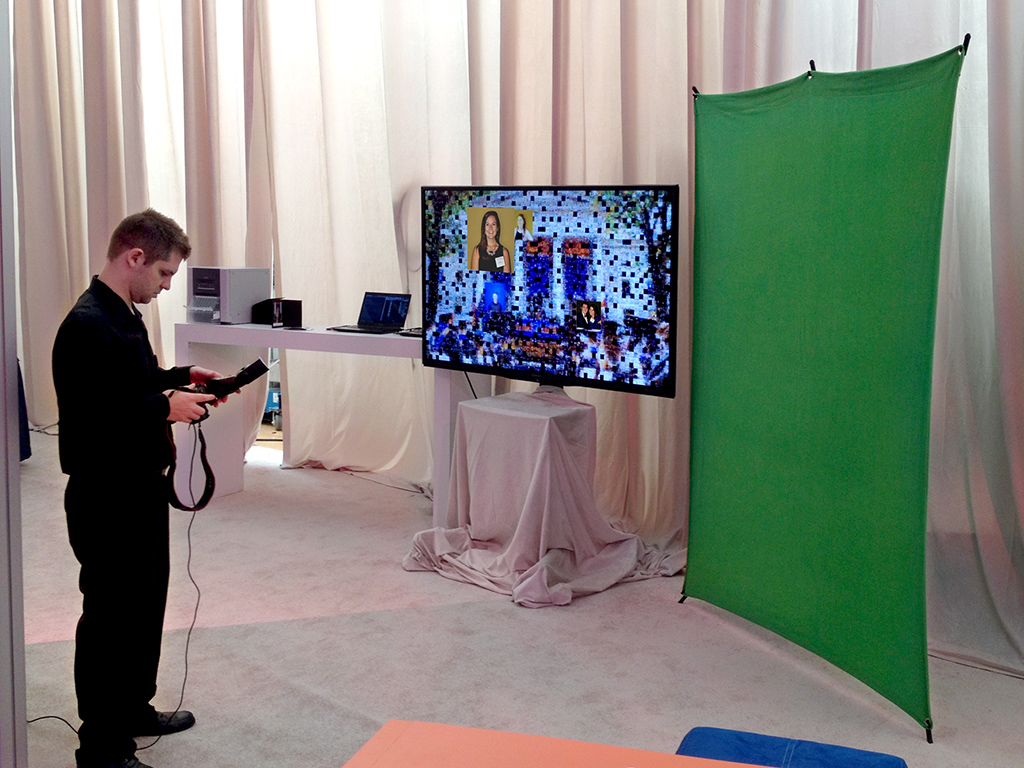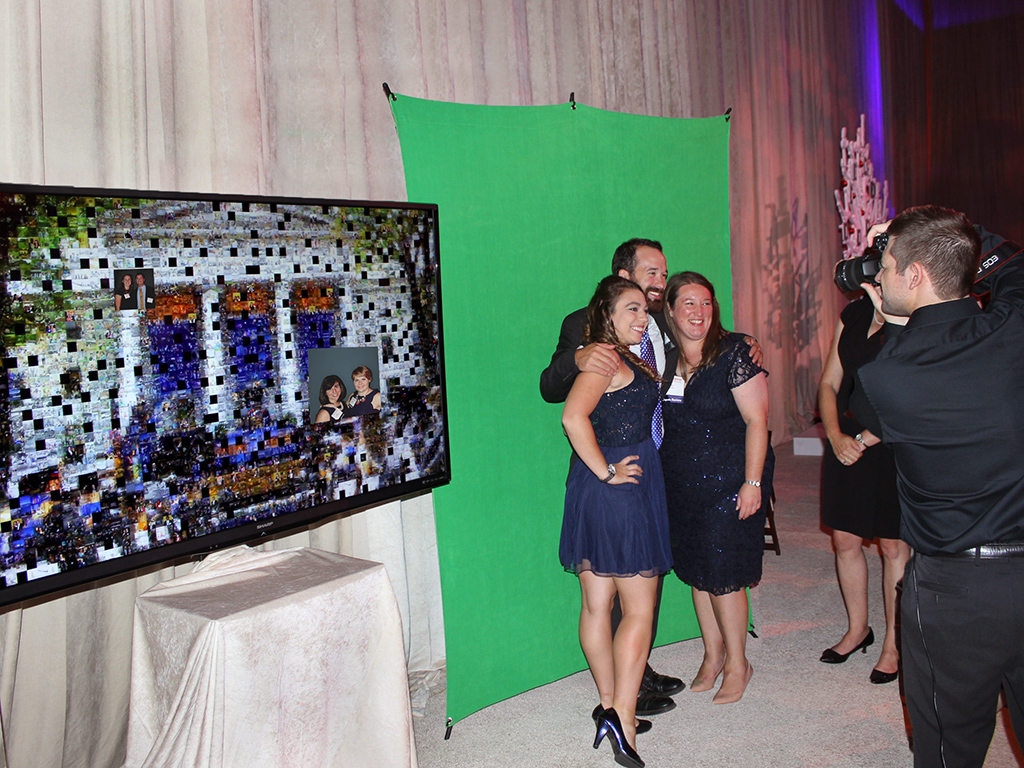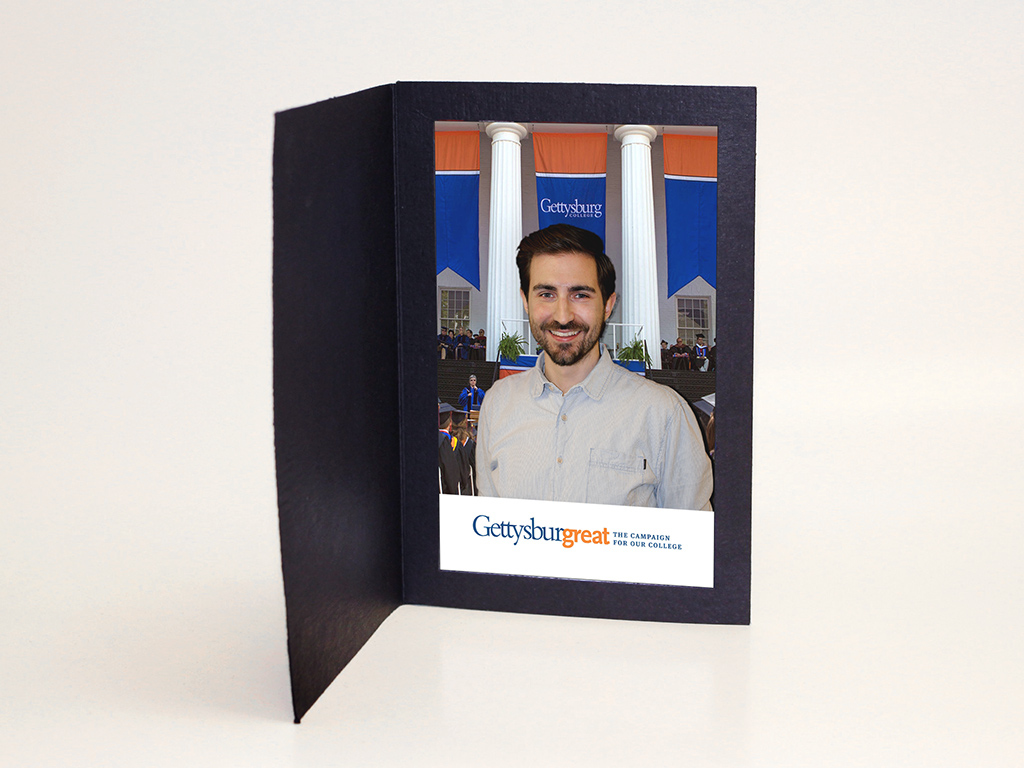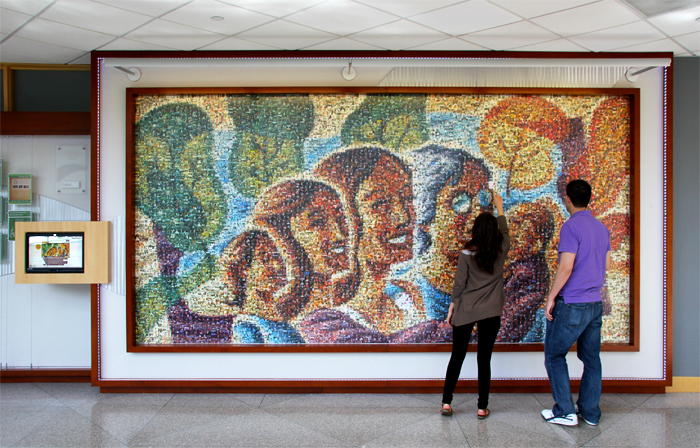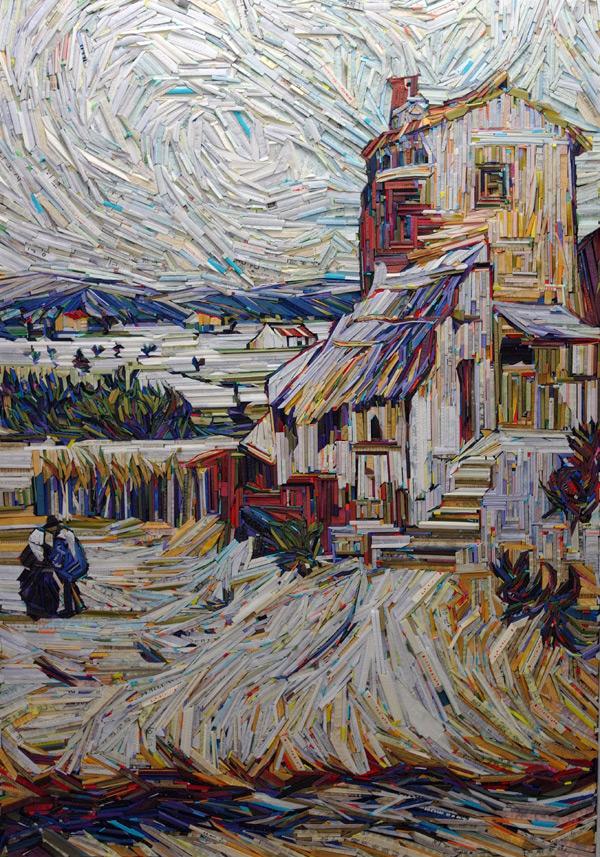A few months ago, I made a post about our online mosaic tool that’s been in the works. This week, we’re super excited to announce that it’s ready to go! Developed by the Picture Mosaics team over the last 12+ years, we’ve made our online mosaic tool simple to use and capable of creating the best possible photo mosaics.
A Photo Mosaic For The Ages
In an interesting combination of time-lapse photography and photo mosaic design, UK-based photographer Noel Myles creates remarkable works of art. Nearly 15 years ago, Myles created black and white platinum/palladium prints of trees throughout the eastern part of the English countryside. A decade after that, he photographed the trees in color. By “cutting and pasting” these photos together, he creates a sort of time-lapse photo mosaic of each tree. He refers to them as “still films.”
Digital Interactive Mosaic Event: GettysburGreat Fundraiser
Online Photo Mosaic Fundraiser: The Mario Mosaic Mural
What happens when you take two world class organizations, The Pittsburgh Penguins and The Mario Lemieux Foundation, and combine it with our mosaic technology, services, and attention to artistic detail: one amazing online photo mosaic experience. The initial goal was to create a large permanent 20ft x 8ft mural in new Penguins CONSOL arena, however with the addition of touch screen kiosks and an online photo mosaic, it became much more. The Mario Mosaic was a great way to involve the community and help raise funds for cancer and neonatal research; without a doubt it has become a main attraction at the new hockey arena.
DIY: Online Photo Mosaic Tool
***UPDATE***
The Online Mosaic Tool is live! Check it out here – www.PictureMosaics.com/photo-mosaic
Calling all photo mosaic lovers! We try not to focus too much on ourselves here, but we’ve got some great news for all the ‘do-it-yourselfers’ out there. Last month, we mentioned that we’ve been developing our very own photo mosaic software. Today, we’re proud to announce that in late September we’ll be unveiling our online photo mosaic tool! Our entire team has been hard at work, making sure the tool is running smoothly and ready to create the most stunning photo mosaics on the market.
Interactive mosaics: Goodbye Flash. Hello HTML5.
We’re thrilled to announce that our interactive mosaics have made a transition from Adobe Flash to HTML5. Without digging to deep into it, our interactive mosaics are now being built using html code rather than contained within a Flash player. This give us a great advantage when building online interactive mosaics. You can read more about the differences between Flash and HTML5 here.
Check out some of our most popular interactive mosaics built with HTML5 for the full mosaic experience: IMAX®, Atlanta Falcons ‘Rise Up’, Meow Mosaic, Pup Mosaic
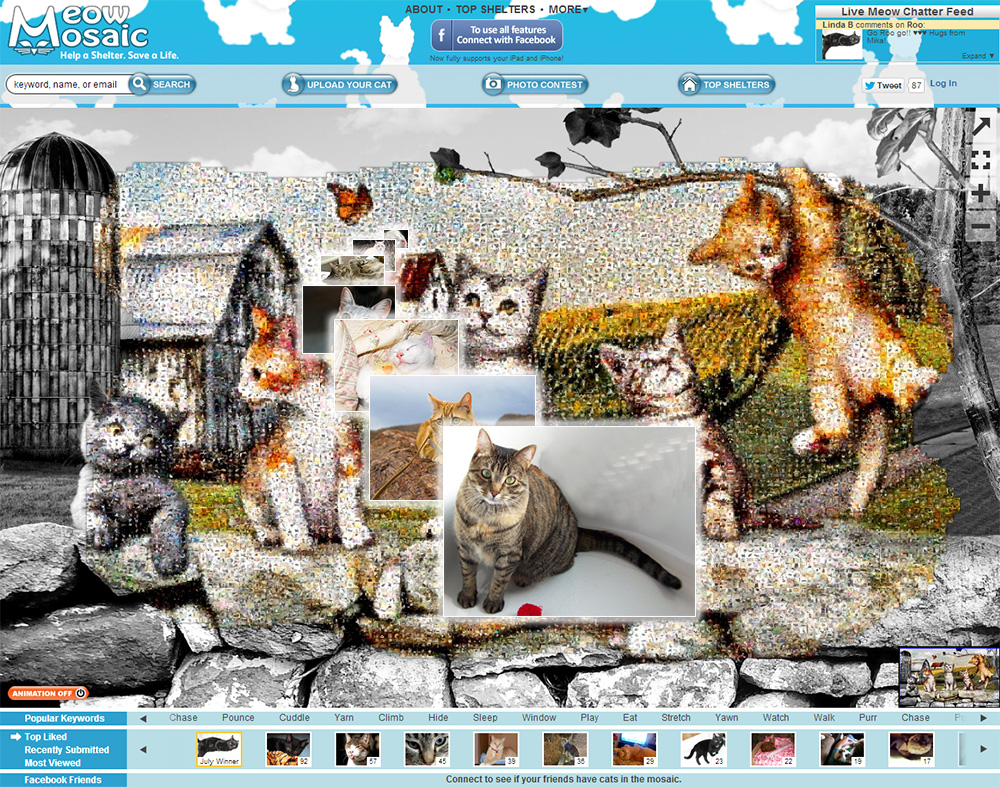
Shape Mosaics: The next big thing
***1/6/2015 UPDATE***
You can now place your Shape Mosaic order through our website!
Photo mosaics are a passion of ours. We work hard at pushing the mosaic concept to new heights every day. That’s why we’re super excited to introduce a new kind of photo mosaic to our gallery: Shape Mosaics. Rather than building a mosaic based on the color and detail within the source image, these mosaics build a specific solid shape out of your cell images. Perfect for brand logos, silhouettes, and solid shapes.
Magee Womens Hospital 100th Anniversary Photo Mosaic
For a donation of just $25 to the Magee-Womens Foundation, participants of Magee’s 100th anniversary celebration were able to include a photograph of themselves, their child, or another special person in their life in the Magee 100 Mosaic. Thousands of submitted photos helped to create this 14ft x 7ft Magee 100 Mosaic — a beautiful piece of artwork that hangs in the main lobby of the hospital.
Each donation was used to support the Patient Care Fund at Magee-Womens Hospital of UPMC. The Patient Care Fund provides many necessary items for patients and their families while being cared for at Magee.
Mosaics Give a New Perspective on Classic Art
They say that imitation is the greatest form of flattery. While exploring the online world of photo mosaics, I came across Kyu Hak Lee’s mixed-media mosaics. Beautifully innovative, his work is an homage to the iconic artwork of Vincent Van Gogh. By cutting small slivers of Styrofoam and wrapping them with newsprint and magazine pages, Lee creates lush, vibrant landscapes of color. Each piece is strategically placed to perfectly mimic Van Gogh’s unique brushstrokes.
‘A Day in the Life’ of Diabetes Photo Mosaic
An online interactive photo mosaic is the perfect way to bring people together for a good cause. Three years ago, we teamed up with the American Diabetes Association to create a fan-driven photo mosaic. The goal was to show the world what a day in the life of diabetes is really like. The photos came pouring in and the results were truly inspirational. With social sharing and audience engagement being a key factor, the ADA online photo mosaic has played an important role in diabetes awareness these past few years.



